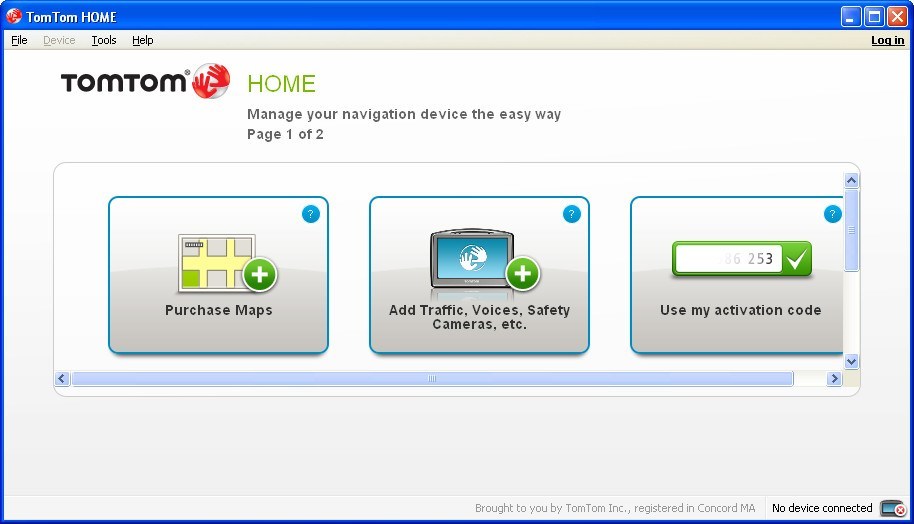
#Tomtom home slow android
So in January 2023 instead of buying a new TomTom unit for about £260 I decided to buy the TomTom android app TomTom Go on Google play. In all my past 3 TomTom units the battery life has after 1 year become poor. My 3rd unit is about 5 years old and has very bad battery life even though I had a new battery fitted about 2 years ago. TOMTOM A COMPANY TO AVOID AT ALL COST! ☹️☹️ Save your money and your sanity and avoid at all costs. Issue is still ongoing but trying to get any helpful answers from this company is impossible. Another email sent, asking how I could return an item I never received and another reply saying they have closed the case as resolved. After asking for a refund for the device I never received, I had another email from the representative saying “if you refuse delivery or just post the device back” we can arrange a refund. Eventually someone emailed me back saying the device is on its way and closed the case as resolved. Tried contacting TomTom via their absolutely useless chatbot and it just keeps telling you to log in (which I already was). Tracking number shows the delivery company are “still waiting” for package to arrive. Ordered a new device with a 2-4day delivery estimate and 10 days later, still no device. The picture below shows a Google Streetview car capturing information about the famous ancient Roman aqueduct in Segovia, Spain.Possibly the worst company I have ever had the misfortune to deal with. But I never expected to get such clear visual (if anecdotal) proof of that fact. Given the differences in their market positions, it shouldn't be surprising that Google and Apple can devote more resources to keeping their maps updated than struggling standalone GPS companies. Just as troublesome, the unit was super slow, taking minutes to calculate positions and routes that our smartphones found in seconds. But perhaps the biggest issue was that it couldn't even find Sixt's own rental return location in Valencia, which both Google and Apple Maps located instantly. That was particularly true when the unit got us lost and we tried to enter new information quickly to get us reoriented. For example, the UI on our Tom Tom unit was so balky and inflexible that it was almost impossible to find and enter the destinations we were seeking. While some still try to find reasons to use these devices, the fact is that smartphones actually do a better job in most cases. In 2013, market leader Garmin's standalone GPS sales were tanking in the face of what Technology Review called "an unstoppable decline in demand for stand-alone GPS devices." That could be a reason why stock prices for Tom Tom and Garmin have fallen dramatically from their 2008 highs. Wired declared standalone GPS dead way back in 2012. Despite Tom Tom's European optimism, most research-not to mention the eyeball test-show that the market for standalone GPS units has been shrinking for years. In retrospect, it should have been obvious that renting a standalone GPS, even in a foreign country, was a bad idea.
#Tomtom home slow full
While Smithers fumbled his way around the countryside, we enjoyed full smartphone coverage, even on a remote beach in the Parc Natural del Delta de l'Ebre. That may be, but things didn't work out that way for us.

Apparently, we're not alone: In July, the New York Times noted that "TomTom's stand-alone GPS business is growing… as customers look for ways to avoid smartphone and data roaming charges when they cross international borders." We were also worried that we might be traveling outside of cellular data coverage areas. We had rented Smithers in a misguided attempt to prevent overloading our data roaming limits as we drove from Barcelona to Valencia, a mistake we won't make again. If it hadn't been for our smartphones, we might still be cruising the Ebre Delta, traveling in circles as we searched for the perfect plate of beachside Paella. "Smithers," as we began calling the device's English-accented voice, was totally and completely lost. It couldn't figure out where we were, seemed to think that a railroad station parking lot was a major thoroughfare, and appeared unaware of the existence of more than one roundabout and other traffic features, leading to a fair amount of confusion and frustration. Yet the Tom-Tom GPS device that Sixt Car Rental had provided us somehow couldn't keep up. It looked like nothing had changed for centuries in this remote but beautiful area of the Spanish countryside. There was nothing around for miles (kilometers?) but rice fields and the occasional farmhouse. We were driving a rented Ford Fiesta from the ancient Spanish city of Tortosa toward the beaches on the Ebre Rver Delta.


 0 kommentar(er)
0 kommentar(er)
